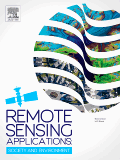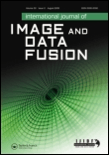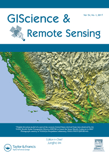
Frontiers in Remote Sensing
Scope & Guideline
Connecting scientists to the forefront of remote sensing advancements.
Introduction
Aims and Scopes
- Innovative Remote Sensing Techniques:
The journal emphasizes the development and application of cutting-edge remote sensing technologies, including satellite, UAV, and in-situ measurements, to enhance data collection and analysis. - Environmental Monitoring and Management:
Research published in the journal often centers on using remote sensing data to monitor environmental changes, such as deforestation, urbanization, land use changes, and climate impacts, thereby contributing to better management practices. - Integration of Machine Learning and AI:
A significant focus on the integration of machine learning and artificial intelligence methodologies to improve the analysis and interpretation of remote sensing data, allowing for more accurate predictions and classifications. - Marine and Atmospheric Studies:
The journal frequently covers studies related to ocean and atmospheric phenomena, including ocean color monitoring, aerosol retrievals, and climate studies, highlighting the role of remote sensing in understanding complex environmental systems. - Biodiversity and Habitat Monitoring:
Contributions often include research on monitoring biodiversity and ecosystem health through remote sensing, utilizing both acoustic and optical data to assess habitat conditions and species distributions.
Trending and Emerging
- Deep Learning in Remote Sensing:
There is a marked increase in the application of deep learning techniques for analyzing remote sensing data, enhancing capabilities in object detection, land cover classification, and environmental monitoring. - Real-Time Data Processing and Applications:
A trend towards real-time processing of remote sensing data has emerged, particularly in applications related to disaster management and environmental monitoring, highlighting the need for timely responses to ecological changes. - Interdisciplinary Research Approaches:
Emerging themes show a growing trend towards interdisciplinary research that combines remote sensing with fields such as ecology, health, and urban planning, leading to more holistic studies of complex environmental issues. - Focus on Climate Change Indicators:
Research is increasingly focusing on using remote sensing to monitor climate change indicators, such as greenhouse gas emissions, land surface temperature variations, and changes in ice coverage, reflecting the urgent need for climate action. - Acoustic Remote Sensing:
The integration of acoustic monitoring techniques with traditional remote sensing methods is gaining traction, particularly in marine environments, to assess biodiversity and ecosystem health, indicating a broader scope of ecological monitoring.
Declining or Waning
- Traditional Land Use Classification:
There is a noticeable decline in papers focused on conventional land use classification methods, suggesting a shift towards more sophisticated machine learning approaches that offer better accuracy and efficiency. - Basic Remote Sensing Algorithms:
Research centered on foundational remote sensing algorithms appears to be waning, possibly due to the increasing complexity and specificity of emerging methods that utilize advanced technologies and computational techniques. - Historical Remote Sensing Applications:
Studies emphasizing historical remote sensing applications, such as long-term data comparisons without innovative analytical techniques, are becoming less frequent, indicating a move towards more contemporary and relevant applications.
Similar Journals

Drones, published by MDPI in Switzerland, is a leading open-access journal dedicated to advancing research in the dynamic field of drone technology and applications. Since its inception in 2017, this journal has quickly established itself as a vital source of scholarly content, boasting a Q1 ranking in Aerospace Engineering and strong placements in Artificial Intelligence, Computer Science Applications, Control and Systems Engineering, and Information Systems. The journal aims to foster discourse and innovation around drone usage across various sectors, including environmental monitoring, logistics, and advanced manufacturing. With an impressive Scopus ranking, including a top 30 position in Aerospace Engineering, Drones continues to draw contributions from a diverse array of researchers, professionals, and students, thereby enriching the academic dialogue surrounding this transformative technology. As an open-access journal, it ensures that research is widely accessible, promoting transparency and collaboration within the international research community.

Remote Sensing Applications-Society and Environment
Pioneering insights from remote sensing for global sustainability.Remote Sensing Applications-Society and Environment, published by Elsevier, stands at the forefront of interdisciplinary research, bridging the fields of remote sensing and environmental science. With an impressive impact factor and recognition within the Q1 quartile in both Computers in Earth Sciences and Geography, Planning and Development, the journal is a vital resource for researchers, professionals, and students committed to advancing our understanding of environmental dynamics through innovative remote sensing technologies. Since its inception in 2015, this journal has cultivated a rich repository of knowledge, addressing pertinent societal and environmental issues, making it a leading source for transformative applications in the field. Accessible and relevant, articles published here not only explore theoretical advancements but also practical implications, ensuring research findings are effectively disseminated to stimulate further inquiries and applications in sustainability and ecological stewardship. The journal's strong Scopus rankings, particularly within its categories, solidify its role as an essential platform for scholarly exchange.

International Journal of Image and Data Fusion
Unifying Perspectives in Earth and Planetary SciencesThe International Journal of Image and Data Fusion, published by TAYLOR & FRANCIS LTD, is a premier scholarly journal dedicated to the fields of computer science applications and earth and planetary sciences. With an ISSN of 1947-9832 and E-ISSN 1947-9824, this journal offers a unique platform for researchers, professionals, and students interested in the innovative integration of image processing and data fusion techniques. Operating from the United Kingdom, it plays a vital role in advancing knowledge and facilitating discussions in these rapidly developing domains, evidenced by its ranking within the Q3 category for Computer Science Applications and Q2 for Earth and Planetary Sciences in 2023. The journal features rigorous peer-reviewed content that spans from 2010 to 2024, encouraging the dissemination of novel research findings and methodologies. With a notable impact factor and strong Scopus rankings, it remains an essential resource for those seeking to enhance their understanding and application of sophisticated data fusion technologies in their academic or professional work.

Atmospheric Measurement Techniques
Unlocking Insights Through Cutting-edge Measurement Techniques.Atmospheric Measurement Techniques, published by COPERNICUS GESELLSCHAFT MBH, is a premier open-access journal that has been contributing to the field of atmospheric science since 2008. With its focus on advancing techniques for atmospheric observations and measurements, the journal has established itself as an authoritative source with a Q1 ranking in the Atmospheric Science category for 2023, placing it among the top journals in the field. Based in Germany, its commitment to accessibility ensures that researchers, professionals, and students can freely engage with high-quality research that influences environmental monitoring, climate studies, and atmospheric modeling. As of 2023, it successfully ranks 32nd out of 148 in Earth and Planetary Sciences—demonstrating its significant impact in the scientific community with a commendable 78th percentile status within this dynamic domain. Researchers focusing on innovative atmospheric measurement techniques will find this journal a vital platform for disseminating their findings and collaborating on cutting-edge research.

Geographia Technica
Advancing Knowledge in Earth Sciences and PlanningGeographia Technica is an esteemed academic journal published by GEOGRAPHIA TECHNICA ASSOCIATION - GT Assoc in Romania, serving as a vital platform for the dissemination of cutting-edge research in the interdisciplinary fields of geography, planning, and earth sciences. Since its inception in 2009 and continuing through to 2024, the journal has established itself as a respected source of knowledge, reflected in its classification within the Q3 category across significant fields such as Computers in Earth Sciences, Earth-Surface Processes, and Geography, Planning and Development. With the ambition to enhance the understanding of socio-environmental interactions and technological applications in these areas, Geographia Technica invites scholars and practitioners to contribute original research that pushes the boundaries of current knowledge. Although currently not listed as open access, the journal's engaging content ensures it remains a valuable resource for researchers, professionals, and students keen on advancing their expertise in these dynamic disciplines.

Remote Sensing
Bridging Earth Science and Technology for a Sustainable FutureRemote Sensing is a highly esteemed journal published by MDPI, dedicated to the domain of Earth and Planetary Sciences. With an impressive impact factor reflected in its rank of #16 out of 195 in the general Earth and Planetary Sciences category, this journal achieves a commendable 92nd percentile among its peers, indicating its significant contribution to the field. Since its inception in 2009 as an Open Access journal, it has enabled researchers, professionals, and students from around the globe to access high-quality, peer-reviewed articles that delve into the latest advancements in remote sensing technologies, methodologies, and applications. Based in Switzerland, Remote Sensing serves as a vital platform for disseminating innovative research that supports and enhances our understanding of Earth's processes and environments, ensuring scientific knowledge remains freely accessible and impactful.

GIScience & Remote Sensing
Fostering Collaboration for a Deeper Understanding of Our PlanetGIScience & Remote Sensing, published by Taylor & Francis Ltd, stands as a leading journal in the realm of Earth and Planetary Sciences, holding a prestigious Q1 ranking. Since its transition to Open Access in 2022, the journal has significantly broadened its reach, enabling researchers, professionals, and students across the globe to disseminate and access cutting-edge research related to geographic information science and remote sensing technologies. With a focus on publishing high-quality, peer-reviewed articles that contribute to the understanding of the Earth’s processes, environments, and interactions, this journal not only supports advancements in scientific knowledge but also fosters interdisciplinary collaboration. Based in the United Kingdom, GIScience & Remote Sensing continues to pave the way for innovative methodologies and applications, solidifying its vital role within the scientific community.

RUSSIAN JOURNAL OF ECOLOGY
Bridging Research and Practice in Russian EcologyRUSSIAN JOURNAL OF ECOLOGY, published by PLEIADES PUBLISHING INC, stands as a critical resource within the field of ecology, offering an array of research insights that span various ecological topics. With an ISSN of 1067-4136 and an E-ISSN of 1608-3334, this journal has been consistently disseminating knowledge since its inception in 1996, now converging towards 2024. Despite its current Q4 ranking in the Ecology, Evolution, Behavior and Systematics category, the journal has carved out a niche in the publication landscape, particularly for scholars focused on the rich and diverse ecological phenomena of Russia and surrounding territories. The journal aims to foster interdisciplinary collaboration and innovation by providing a platform for the dissemination of high-quality research. While it currently lacks open access options, readers can expect in-depth studies and analytical discourses that contribute meaningfully to the global understanding of ecological systems. With an impressive Scopus rank, this journal remains an important outlet for researchers, professionals, and students committed to advancing ecological science.

Revista de Teledeteccion
Connecting researchers to real-world solutions.Revista de Teledeteccion, published by UNIV POLITECNICA VALENCIA, EDITORIAL UPV, is a leading Open Access journal dedicated to the interdisciplinary field of remote sensing and its applications. Since its inception in 2010, this journal has provided a vital platform for researchers, professionals, and students to disseminate groundbreaking findings, foster collaboration, and engage with contemporary challenges in Earth and Planetary Sciences as well as Geography, Planning, and Development. With a Q3 ranking in both fields as of 2023, it serves as an essential resource for advancing knowledge and innovative practices in hi-tech remote sensing methodologies. The journal covers a broad spectrum of topics, from satellite imaging techniques to environmental monitoring, making it an invaluable asset for those interested in harnessing remote sensing technologies to address real-world issues. The editorial office is located in Valencia, Spain, and the journal aims to bridge the gap between theoretical research and practical application, enriching the scientific community's understanding and capabilities in this dynamic domain.

International Journal of Applied Earth Observation and Geoinformation
Pioneering Solutions for Earth’s Most Pressing Challenges.International Journal of Applied Earth Observation and Geoinformation is a premier peer-reviewed journal published by Elsevier, focusing on the integration and application of earth observation and geoinformation technologies across diverse fields. With an open access model established in 2020, this journal enhances accessibility and dissemination of research crucial for addressing global challenges related to climate change, resource management, and sustainable development. The journal occupies a notable position within the academic community, featuring a Q1 ranking in multiple categories including Computers in Earth Sciences, Earth-Surface Processes, and Global and Planetary Change, reflecting its significant impact and relevance in these disciplines. It is recognized for its high-quality articles that explore innovative methodologies and applications, making it an essential resource for researchers, practitioners, and students alike who seek to advance their understanding of earth dynamics and geospatial technology. The journal is indexed in Scopus with impressive rankings that underscore its high citation impact and scholarly influence, with an emphasis on providing a platform for the latest findings in management, monitoring, and policy in environmental science.